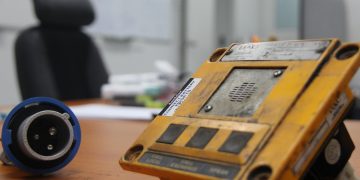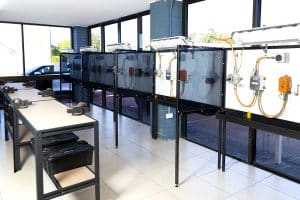A Biased View of Roar Solutions
A Biased View of Roar Solutions
Blog Article
All about Roar Solutions
Table of ContentsThe Best Guide To Roar SolutionsThe Basic Principles Of Roar Solutions Getting The Roar Solutions To Work
In order to protect installments from a potential explosion a technique of evaluating and classifying a potentially harmful area is required. The objective of this is to make sure the appropriate selection and installation of tools to inevitably avoid a surge and to ensure safety of life.
(https://lnk.pblc.app/pub/f49b043987c7b7)
No tools must be installed where the surface area temperature of the equipment is more than the ignition temperature level of the given threat. Below are some common dust dangerous and their minimum ignition temperature level. Coal Dust 380C 225C Polythene 420C (melts) Methyl Cellulose 420C 320C Starch 460C 435C Flour 490C 340C Sugar 490C 460C Grain Dirt 510C 300C Phenolic Resin 530C > 450C Aluminium 590C > 450C PVC 700C > 450C Soot 810C 570C The likelihood of the threat being present in a focus high adequate to create an ignition will differ from location to place.
In order to classify this threat a setup is separated right into locations of risk relying on the amount of time the harmful is existing. These areas are referred to as Areas. For gases and vapours and dusts and fibres there are three zones. Zone 0 Zone 20 A harmful atmosphere is highly likely to be present and may be existing for long durations of time (> 1000 hours annually) or perhaps continually Zone 1 Area 21 A hazardous atmosphere is possible but unlikely to be present for long durations of time (> 10 450 C [842 F] A classification of T6 suggests the minimal ignition temperature level is > 85 C [185 F] Hazardous area electrical equipment perhaps developed for use in greater ambient temperature levels. This would suggested on the ranking plate e.g. EExe II C T3 Ta + 60C( This indicates at 60C ambient T3 will certainly not be gone beyond) T1 T1, T2, T3, T4, T5, T6 T2 T2, T3, T4, T5, T6 T3 T3, T4, T5, T6 T4 T4, T5, T6 T5 T5, T6 T6 T6 A T Course rating of T1 means the maximum surface area temperature level generated by the instrument at 40 C is 450 C. Thinking the associated T Class and Temperature ranking for the equipment are ideal for the location, you can constantly utilize an instrument with a more rigid Division score than needed for the location. There isn't a clear response to this concern however. It truly does depend upon the type of tools and what fixings require to be executed. Devices with specific test procedures that can't be performed in the field in order to achieve/maintain 3rd party rating. Have to come back to the factory if it is before the tools's solution. Field Fixing By Authorised Personnel: Challenging testing may not be called for nonetheless details procedures may need to be followed in order for the devices to keep its third celebration score. Authorized personnel have to be utilized to carry out the job properly Repair work need to be a like for like substitute. New element have to be taken into consideration as a straight substitute requiring no special testing of the devices after the repair is complete. Each piece of equipment with an unsafe score should be evaluated independently. These are detailed at a high level below, but also for even more comprehensive information, please refer directly to the standards.
Rumored Buzz on Roar Solutions
The tools register is an extensive data source of tools documents that consists of a minimum set of fields to identify each product's location, technical parameters, Ex category, age, and environmental information. The ratio of Thorough to Close assessments will certainly be determined by the Tools Threat, which is examined based on ignition risk (the likelihood of a resource of ignition versus the possibility of a flammable ambience )and the hazardous area classification
( Zone 0Area 1, or 2). Carrying out a robust Risk-Based Assessment( RBI )strategy is critical for ensuring compliance and security in handling Electrical Tools in Hazardous Areas( EEHA).
Roar Solutions - Questions

In regards to explosive threat, an unsafe location is an environment in which an eruptive atmosphere is existing (or might be anticipated to be existing) in quantities that require special precautions for the building, installment and use devices. eeha training. In this article we check out the obstacles encountered in the workplace, the danger control actions, and the required proficiencies to function securely
These substances can, in particular conditions, form explosive ambiences and these can have major and terrible effects. Most of us are familiar with the fire triangle eliminate any type of one of the 3 components and the fire can not happen, but what does this mean in the context of hazardous areas?
In many instances, we can do little concerning the degrees of oxygen in the air, yet we can have significant impact on sources of ignition, as an example electric equipment. Hazardous areas are documented on the harmful location category illustration and check that are determined on-site by the triangular "EX" sign. Right here, amongst other essential details, zones are divided into three kinds relying on the danger, the chance and period that an eruptive ambience will exist; Zone 0 or 20 is regarded the most harmful and Zone 2 or 22 is deemed the least.
Report this page